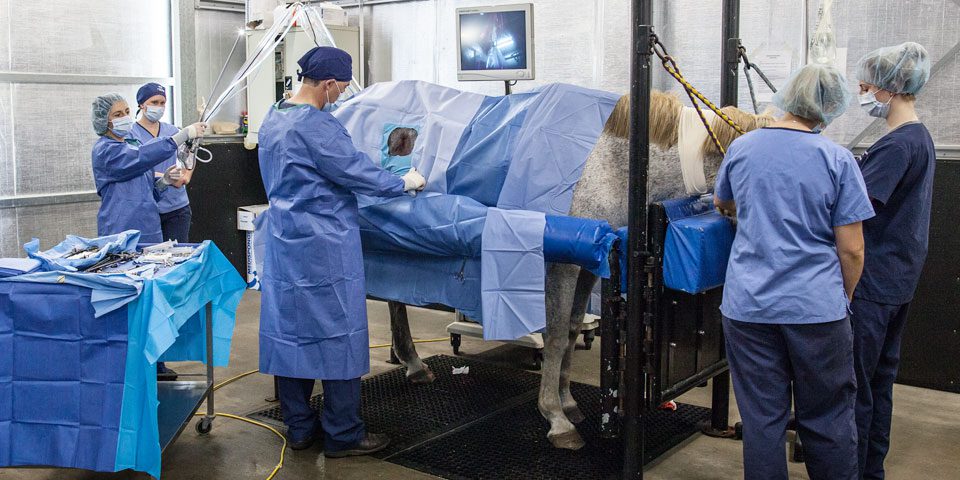As the first of September and the covering season approaches, many breeders will obviously be considering the options available for achieving pregnancies in difficult breeding mares.
Those mares which have not had a foal for the last two years are a particularly difficult challenge, especially if there is no obvious reason for their infertility. In recent years, following on from research in the human medical field, temporary blockage of the oviduct has become recognised as a cause of infertility in mares. Mares which continually fail to conceive despite being mated to a fertile stallion, undergoing normal ovulations and having no evidence of disease of the uterus or cervix, may be suffering from blocked oviducts.
The oviduct is a narrow tube that runs from the ovary to the uterus, and it is where fertilization of the mares “egg” by the sperm occurs. Blockage of the oviduct is due to an accumulation of debris from previous ovulations or pregnancies. The blockage will often allow the passage of sperm, due to their very small size, but not allow the passage of the developing embryo, causing it die in the oviduct. It has been shown that the application of prostaglandin to the oviduct will cause it to contract and flush the debris from the oviduct.
Laparoscopy is a surgical technique, much like arthroscopy, where a long camera is placed into the horse’s abdomen to view the oviduct, uterus and other internal organs. A laparoscopic technique to view and treat the oviduct with prostaglandin has been developed in recent years and very exciting fertility rates have been achieved in previously infertile mares. The technique is performed 4 days after ovulation with the mare standing and under sedation. ,This procedure does not distress the mare and is very well tolerated.
Scone Equine Hospital surgeons performed the procedure on 35 mares in 2009-2010. In 2009 a pregnancy rate of 80% was achieved for mares that had not been in foal for at least 2 years. Of the mares that conceived, 30% did so on the same cycle as the surgery, 30% on the second cycle and the remainder on subsequent cycles. Interestingly, it was not just old mares that appeared to require this surgery. The technique has been performed on 7 maiden mares that had not been in foal for at least 2 years and all of these mares conceived. In 2010 similar success rates were achieved with mares that underwent the procedure for the first time. It was also found that all of the mares which had conceived following the procedure in 2009 conceived again without the need for a second surgery in 2010.
When dealing with the problem of difficult breeders, it is very rare for new procedures to arise that achieve conception rates of 80% in previously infertile mares. This advanced surgical technique provides a treatment option for broodmare owners who are struggling with mares which fail to conceive for no apparent reason.
This is an image of the surgery being performed. The mare is sedated and standing in a set of stocks. She is covered with a surgical drape and the surgical instruments can be seen in the hands of the surgeons. The image from the laparoscope can be seen on the screen opposite.

